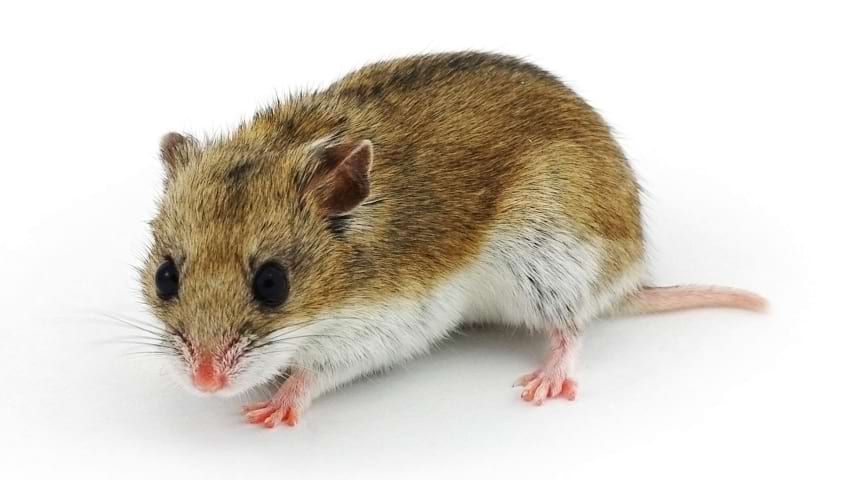If you have an interest in Chinese dwarf hamsters, you’re in for a delightful experience! These charming little pets are well-known for their small size and distinctive characteristics that make them a popular choice among animal enthusiasts. Among hamsters, the Chinese hamster, also known as the “striped-back” hamster, stands out due to its unique appearance.
With their gentle demeanor and calm personalities, Chinese hamsters have gained popularity as pets worldwide. So, if you’re thinking about adding a Chinese hamster to your family, continue reading to discover all you need to know about this special species and their requirements!
Are Chinese Hamsters Dwarf?
When discussing dwarf hamsters, pet owners often refer to those from the Phodopus genus, which includes Roborovski, Winter White, and Campbell’s (and Russian hybrids). However, Chinese hamsters are a bit different as they belong to the Cricetulus genus and are sometimes called ratlike hamsters due to their resemblance to rats.
There is some debate among hamster enthusiasts regarding whether Chinese hamsters are classified as dwarfs. Some argue that Chinese hamsters are technically the only true dwarfs, while others consider Roborovski, Winter White, and Campbell’s hamsters as simply “small” in scientific contexts.
In scientific literature, the Phodopus hamsters are commonly referred to as dwarfs, while Chinese hamsters are occasionally labeled as “dwarfs” as well.
In terms of size, Chinese hamsters are indeed smaller than their popular relative, the Syrian hamster, but slightly larger than the hamsters typically considered dwarfs. While they may not be designated as “true” dwarf hamsters in the strictest sense, they certainly fall on the smaller end of the hamster size spectrum.
Where Do Chinese Hamsters Come From
Chinese hamsters, also known as Chinese dwarf hamsters and Chinese striped hamsters, originate from the steppe and semi-desert regions of northern China and Mongolia. You may find them in various habitats such as grasslands, shrublands, farmlands, and deserts.
In the wild, the ancestors of your Chinese hamster would roam the grassy steppes of China and Mongolia, where they adapted to blend in with their surroundings. Their small size and agility allowed them to navigate the various hiding spots in the vegetation and quickly flee from predators.
These hamsters have also been observed in agricultural areas and on the outskirts of human settlements. Consequently, they often come across wheat and other crops, which have now become a crucial part of their diet in captivity.
As desert creatures, Chinese hamsters are well-suited to arid environments, with water conservation being a key trait. Their kidneys are designed to help them withstand low water intake levels, making them well-suited for living in a dry, challenging climate.
Size & Appearance

Chinese hamsters are larger than the dwarf hamster species from the Phodopus genus but smaller than Syrians. These little creatures measure 3.5 – 5 inches (9-12 cm) in length and weigh around 30-50 grams.
They possess a unique appearance that distinguishes them from other hamster varieties. In comparison to other hamster species, Chinese hamsters have a sleeker, less fluffy appearance and a relatively long and thin tail.
The soft and dense coats of domestic Chinese hamsters come in three colors:
- Wild Type (Agouti)
- Dominant Spot
- Black Eyed White
The most common coloration is the wild type/agouti base with a dark stripe running down their back, earning them the name “striped hamsters.” Black-eyed whites are exceptionally rare, with only a few ever kept as pets.
Breeding has introduced even more intriguing colors and patterns. Some newer variations include white hamsters with full or partial dorsal stripes or even blue ones, which share a similar hue as their sapphire winter white cousins.
When determining the gender of your Chinese dwarf hamster, there is one physical characteristic you can’t miss. Males have fairly large balls relative to their body size, making them easily identifiable.
Chinese Hamster Lifespan
On average, Chinese dwarf hamsters live for around 2-3 years. This lifespan may vary depending on genetics, diet, and living conditions. To enhance their chances of a longer, healthier life, it is crucial to pay attention to their needs and promptly address any health concerns.
Now, let’s explore how you can create a healthy environment and potentially extend the lifespan of your Chinese hamster:
- Spacious habitat: Ensure your hamster has ample space to explore and play in their cage.
- Balanced diet: Provide a nutritious mix of dry food, fresh vegetables, and protein such as mealworms and other insects to keep them healthy and strong.
- Exercise: Offer a wheel and other enrichment to encourage your hamster to stay active, preventing obesity and stress-related boredom.
- Stress-free environment: Minimize loud noises and sudden movements around your hamster’s home, as excessive stress can negatively impact their health.
- Regular check-ups: Take your pet to an exotic veterinarian at the first sign of illness to address potential health issues early on.
In summary, being mindful of your Chinese hamster’s needs and providing a safe and stimulating environment will contribute to a longer, happier life for your tiny companion.
Habitat and Housing

Providing your hamster with a comfortable and engaging environment is essential to keep them happy and stimulated. Here are some key considerations when welcoming a new pet hamster into your home:
Minimum Cage Size
Animal welfare organizations recommend a cage of at least 775 square inches (5000 cm²) to give your hamster enough space to explore and play. A larger cage allows for more enrichment and helps prevent boredom.
Unfortunately, most small hamster cages available in pet stores do not offer adequate space for hamsters to thrive. Despite their small size, hamsters require a habitat that caters to their natural instincts, something that small cages cannot provide.
If you need assistance in the hamster housing department, we have listed some of the best hamster cages here.
Deep Bedding
Your Chinese hamster needs deep bedding for burrowing, mimicking their natural behavior in the wild





